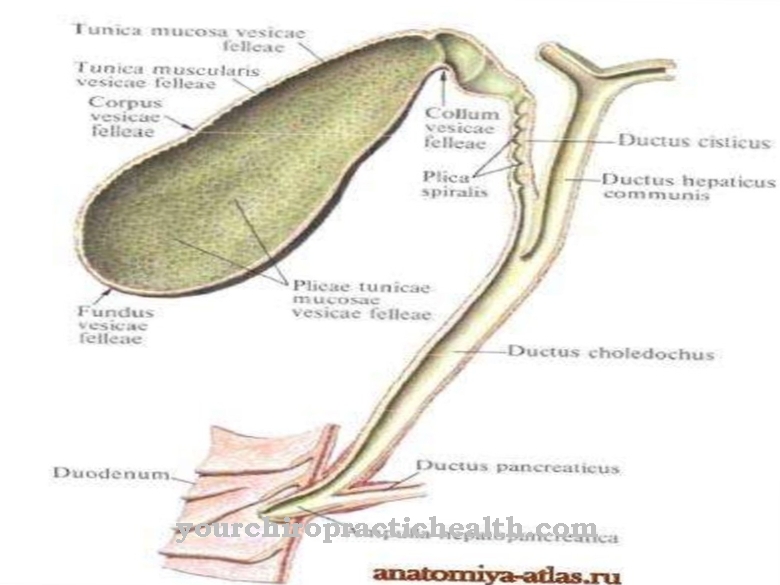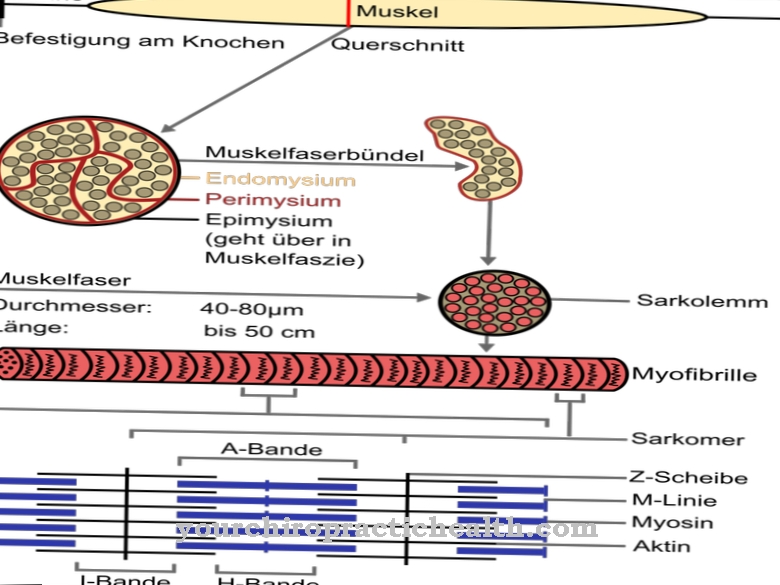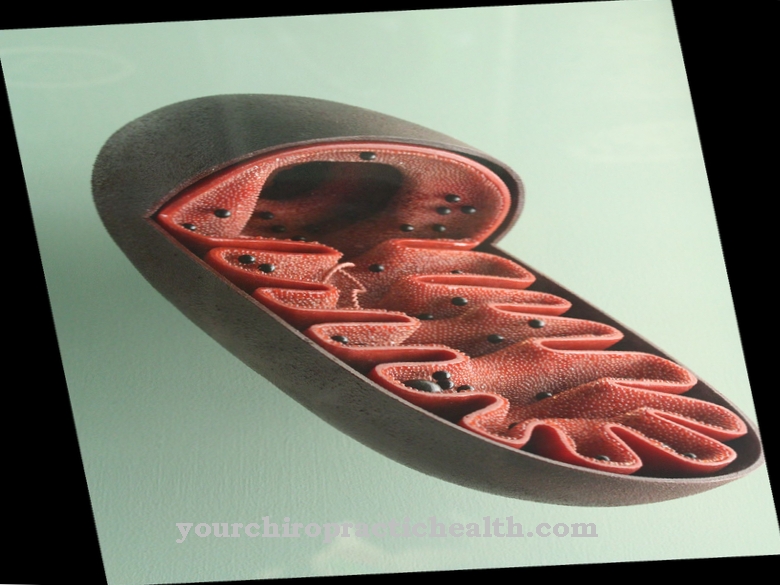The Ganglion oticum is also known as Ear nerve nodes denotes and interconnects parasympathetic nerve fibers that subsequently innervate the parotid secretory glands. The nerve body collection is also a distribution station for motor and sympathetic nerve fibers of the head area. An otobasal skull base fracture can damage the otic ganglion and cause secretory restrictions.
What is the otic ganglion?
The doctor describes the ganglion as an accumulation of nerve cell bodies in the area of the peripheral nervous system. The ganglia appear as nerve nodes that appear as node-like thickenings during dissection. The basal ganglia are to be distinguished from the ganglia of the peripheral nervous system, as they are located under the cerebral cortex within the central nervous system.
In contrast to the peripheral nervous system, clusters of nerve cells in the central nervous system are called nuclei. A cluster of nerve cells in the peripheral nervous system is the otic ganglion, the so-called ear knot. This is a parasympathetically controlled ganglion located on the mandibular nerve within the base of the skull. The ganglion lies below the foramen ovale and is therefore located in the infratemporal fossa. Motor, sympathetic and parasympathetic fibers run through the otic ganglion. However, only parasympathetic fibers that are relevant for the parotid gland are connected in the ganglia area.
Anatomy & structure
The otic ganglion is anatomically and topographically related to the auditory tuba (pars cartilaginea), the tensor veli palatini muscle, the media meningeal artery and the mandibular nerve. Motor, sympathetic and parasympathetic fibers run through the ganglia area. For the motor and sympathetic nerve fibers, however, the ganglion only forms a transit station.
The parasympathetic fibers of the ganglion originate from the glossopharyngeal nerve and have their nerve cell bodies in the inferior salivator nucleus, from where they reach the tympanic plexus together with the tympanic nerve and advance together with the minor petrosus into the otic ganglion. The motor fibers of the mandibular nerve or the medial pterygoid nerve run unswitched through the otic ganglion. The sympathetic fibers of the ganglion are postganglionic and reach the structure of the superior cervical ganglion, which they exit via the carotid plexus.
Function & tasks
The otic ganglion carries parasympathetic nerves that are relevant to the function of the ears.These fibers are interconnected within the ganglion. In this context, the otic ganglion fulfills a mediating function and is therefore also referred to as the ear nerve node. The parasympathetic fibers are directed to the postganglionic neuron within the structure.
From there, they use the auriculotemporal nerve as a conduction pathway to advance to the parotid gland (glandula parotis) and the cheek salivary glands (glandulae buccales). The salivary glands are secretory innervated by the parasympathetic nerve fibers of the otic ganglion. As a result of the interconnection, the otic ganglion is involved in the secretory activity of the ear and cheek salivary glands. The parotid gland continuously produces saliva, which is released through the excretory duct system to solitary glands in the lining of the throat, oral cavity and lips. Saliva cleans the throat and fulfills protective and defense functions within the oral cavity.
In addition, the salivary secretion of the parotid gland carries salivary enzymes to initiate the digestive process. Complex sugar molecules such as starch in particular are dependent on digestion using saliva. Simple proteins are in turn cleaved by the parotid proteases. To make the act of swallowing easier, the saliva also liquefies the solid food. The interconnection of parasympathetic fibers in the otic ganglion enables all these processes. In addition, the ganglion acts as a distributor for its motor and sympathetic fibers.
Various motor and sensitive parts of the mandibular nerve use the otic ganglion as a distribution station without entering into a functional relationship with the structure. The motor fibers reach the tensor tympani muscle via the distribution station in the form of the tensor tympani nerve. In the form of the ramus musculi tensoris veli palatini they run in turn to the musculus tensor veli palatini.
Diseases
Damage to the otic ganglion affects motor, sympathetic and parasympathetic nerve functions. Such a scenario can, for example, be caused by tumors that displace individual nerve structures near the otic ganglion and thus cause nerve compression. Above all, disturbances in saliva production can indicate nerve damage in the area of the ganglion oticum.
In addition to such damage, decreased or lost saliva production can also be related to severe dehydration, the effects of medication, diseases such as Sjögren's syndrome, radiation in the head area or changes in the physiology of age. Normally, damage to the otic ganglion is not noticeable as isolated saliva production disorders, but also leads to motor disorders of the palate and middle ear muscles. Limitations in sensitivity can also occur.
Skull base fractures often lead to lesions in the area of the otic ganglion. A skull base fracture usually occurs after extremely strong violence in the head area. Most often the trauma is observed in the context of traffic accidents. The fracture is a potentially life-threatening injury that injures the bony structures of the middle, anterior, or posterior fossa. The fracture shapes in this context can correspond to a rhinobasal, frontobasal, laterobasal or otobasal fracture. Especially with the latter type of fracture, the structure of the ears is damaged in addition to the base of the skull. Typically, blood and cerebrospinal fluid leak from the ears.
In addition to the neurological failure symptoms, disturbances of perception and consciousness usually occur. Symptoms of shock are also frequently observed in the fracture of the base of the skull. The skull base fracture usually requires emergency surgery and subsequent monitoring in the intensive care unit.























.jpg)



